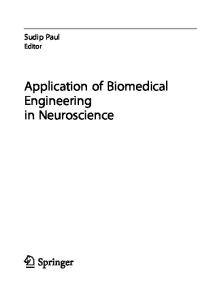Biomedical application of ferrofluids containing magnetite nanoparticles
- PDF / 413,199 Bytes
- 6 Pages / 612 x 792 pts (letter) Page_size
- 107 Downloads / 289 Views
Biomedical application of ferrofluids containing magnetite nanoparticles D.K. Kim 2, W. Voit 1,3, W. Zapka3, B. Bjelke4, M. Muhammed 2 and K.V. Rao 1 1
Engineering Materials Physics Division, and 2 Materials Chemistry Division, Royal Institute of Technology, SE-100 44 Stockholm, Sweden 3 XaarJet AB, SE-175 26 Järfälla, Sweden 4 MR Research Center, Dept. of Clinical Neuroscience, Karolinska Institutet, SE-171 76 Stockholm, Sweden
ABSTRACT Ferrofluids containing superparamagnetic Fe3O4 nanoparticles have been prepared by a controlled co-precipitation method. The aggregation of the particles was prevented by using a polymeric starch network as a coating agent. Structural and magnetic measurements reveal a particle size of around 6 nm, with a clear evidence of a uniform particle coating. The ferrofluids have been used as a contrast agent for MR imaging in biological tissue.
INTRODUCTION Superparamagnetic nanoparticles, conjugated to various monoclonal antibodies [1], peptides or protein [2], show potential applications for in vivo monitoring of brain inter-cellular communications system and target-oriented MR imaging in both animals and human brains. Magnetic nanoparticles as contrast agents in MR were used for localization and diagnosis of brain and cardiac infarcts, liver lesions or tumors, where the particles tend to accumulate at higher levels due to the difference in tissue fluidity and endocytotic process. There are several commercially available dextran coated superparamagnetic iron oxide for MR imaging [3,4]. However, these particles have a rather broad size distribution of 120-180 nm, and the size of these particles is much larger than the extracellular space (
Data Loading...











